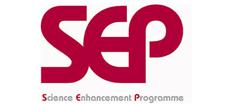Combustion
The resources in this list explore combustion through exciting demonstrations and investigations.
A great lesson to start the topic off is a predict-observe-explain activity, where students explore different ways of extinguishing a flame with some surprising results: https://www.stem.org.uk/rx354r
Chip Pan Fire
This demonstration can be used as a starter activity to grab the students interest. It can be used to link to combustion, fuels, fire safety in the home and rates of reaction.
Students will be familiar with the Fire Triangle and this can be used to discuss how to put fires out safely.
The fireball is an example of how increasing the exposed surface area of a fuel in air increases its burn rate, this can be linked to increased surface area increasing the rate of a chemical reaction
If the oil is burning and water is added, the water will instantly vaporise and expand (as it is well above its boiling point). This rapid expansion forces droplets of hot oil to be ejected from the crucible. The droplets have an increased surface area as they mix with the surrounding air and so they combust readily and result in a fireball.
Whoosh bottle
This favourite demonstration and is an excellent illustration of a combustion reaction.
There's no need to use propanol as suggested in the film as IMS/meths works just as well, if not better, and is much cheaper. As you prepare the bottle, discuss the mixing of the vaporised fuel with oxygen and be sure to make sure the class sees you pour away the excess liquid fuel. When you light the fuel make sure it isn't too close to the ceiling and ensure the bottle isn't underneath a projector.
After the combustion reaction the bottle can be passed around the class so students can feel how warm it is. You can demonstrate the presence of carbon dioxide as a product of the reaction by showing that a lit spill goes out if placed in the bottle. Pouring out the condensed water (without soot if you use meths!) is effective for showing the other product of the reaction.
Students should now be able to write a word equation for the combustion reaction and go on to predict the equations for other fuels. If you have a second bottle, the reaction can be shown again at the end of the lesson if students work well enough! If you don't already have a suitable bottle in school, they can be bought via the internet at modest cost.
Burn Baby Burn
A useful homework activity, this crossword on fuels and simple combustion which can be used to assess students' learning. Answers are entered horizontally onto a grid to reveal another word written vertically. A second crossword gives extra clues so it may be more suitable for the less able.
Fire: Flames and Chemical Change
Here's a full set of videos for investigating flames further. There are teachers notes to go with the videos here: https://11567.stem.org.uk/tg_v1.html
These resources can be used to build students’ understanding of flames in order of increasing complexity from hydrogen through to a candle flame (using a glass wick to counter the very popular notion that it is the wick that is burning).




